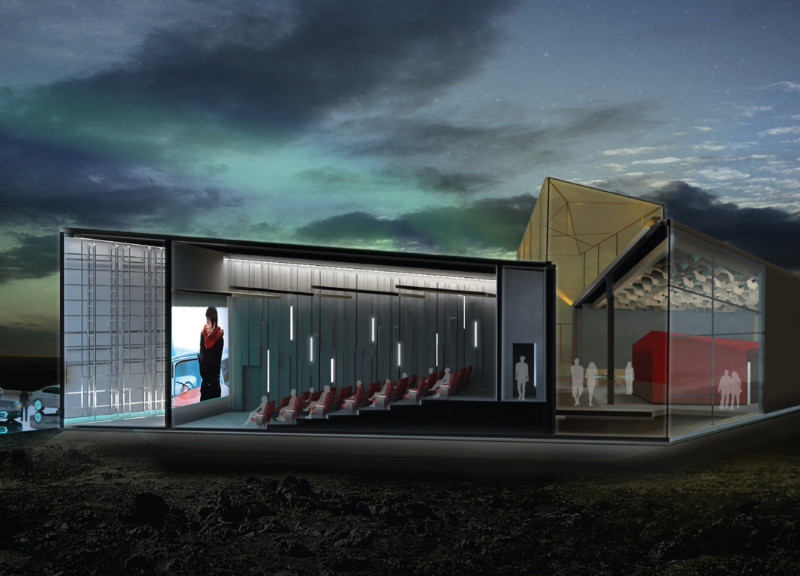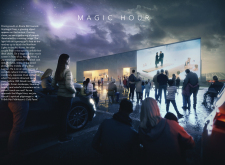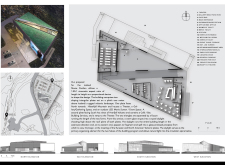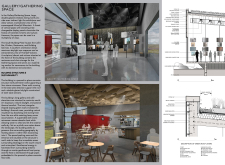5 key facts about this project
One notable element of the project is its layout, which optimizes space utilization and fosters interaction among users. The arrangement of rooms is intuitive, allowing for natural flow and accessibility. Additionally, the project emphasizes the indoor-outdoor connection, incorporating large windows and open spaces that invite natural light and provide panoramic views of the surroundings. This design approach not only enhances the user experience but also promotes a sense of well-being through a constant engagement with nature.
The choice of materials plays a crucial role in defining the character of the project. The building exterior features a combination of durable and sustainable materials such as concrete, glass, and timber. Concrete provides structural integrity while offering a modern aesthetic; its juxtaposition with glass allows for transparency and reflection, creating a dialogue between the building and its environment. Timber adds warmth and texture, which is especially relevant in residential applications, where a sense of comfort is paramount. The use of sustainable materials signals a commitment to environmentally responsible design, aligning with contemporary architectural values.
Unique design approaches are evident in both the building's form and details. The architectural design incorporates elements of biophilic design, which enhances the connection between people and nature. This is achieved through strategically placed green roofs, vertical gardens, and landscaped terraces that not only serve as aesthetic enhancements but also contribute to biodiversity and improve air quality. The integration of such natural elements into the architecture serves as a reminder of the importance of sustainability in modern design.
Attention to detail is reflected in the finishes and fixtures selected for the interiors, which are designed to complement the overall aesthetic while ensuring functionality. High-quality materials are evident in the flooring, cabinetry, and fittings, all of which are chosen not only for their durability but also for their ability to create a cohesive visual narrative throughout the space. The careful selection of colors and textures reinforces a sense of continuity, with subtle variations that enrich the user experience.
This project stands out through its innovative response to the surrounding context. Whether set against an urban backdrop or a more natural landscape, it demonstrates a thoughtful engagement with its surroundings. The architectural decisions made in the design reflect an understanding of both the immediate context and the larger environmental implications of construction.
Furthermore, the project exemplifies a modern interpretation of architectural ideas that focus on community and collaboration. Spaces are designed not only for individual use but also to encourage social interaction, with communal areas that foster a sense of belonging among users. These aspects are integral to contemporary living and reflect evolving patterns of behavior within urban environments, making the project particularly relevant in today's architectural discourse.
For those interested in delving deeper into the specifics of this architectural endeavor, it is encouraged to explore the architectural plans, sections, and designs presented. Engaging with these materials will provide a comprehensive understanding of the project's nuances and the thoughtful architectural ideas that underpin it. By examining the various elements, readers can appreciate the full breadth of this design project and the impact it aims to create within its community.


























